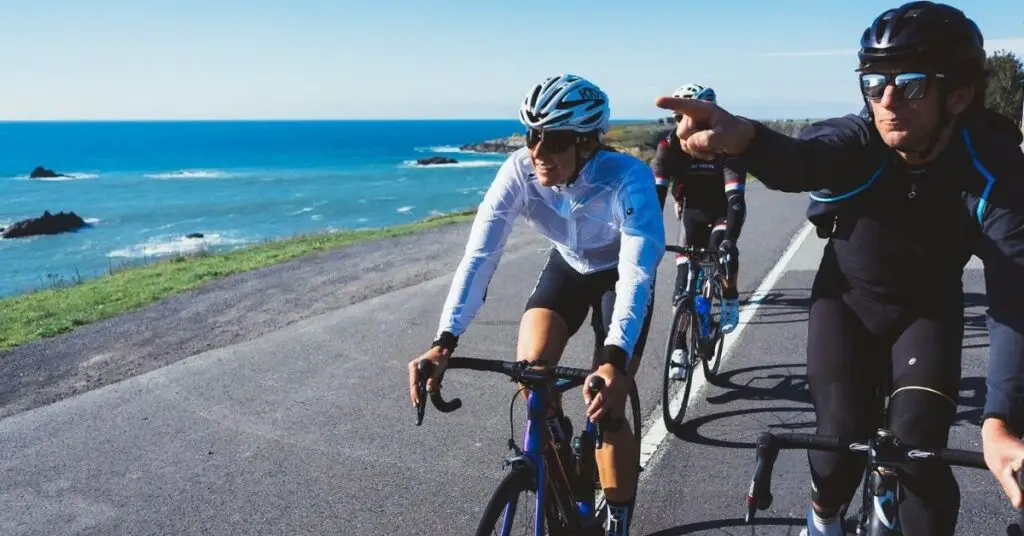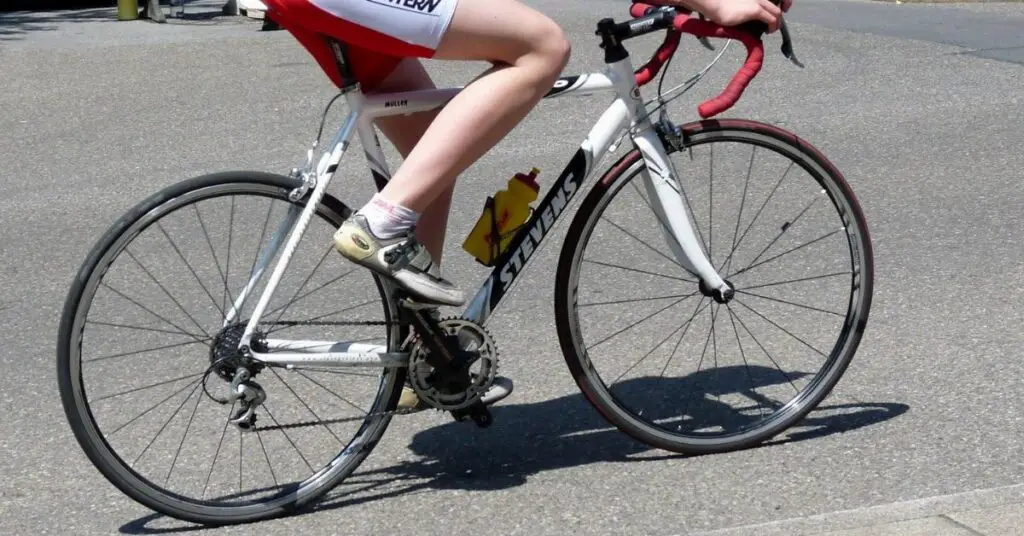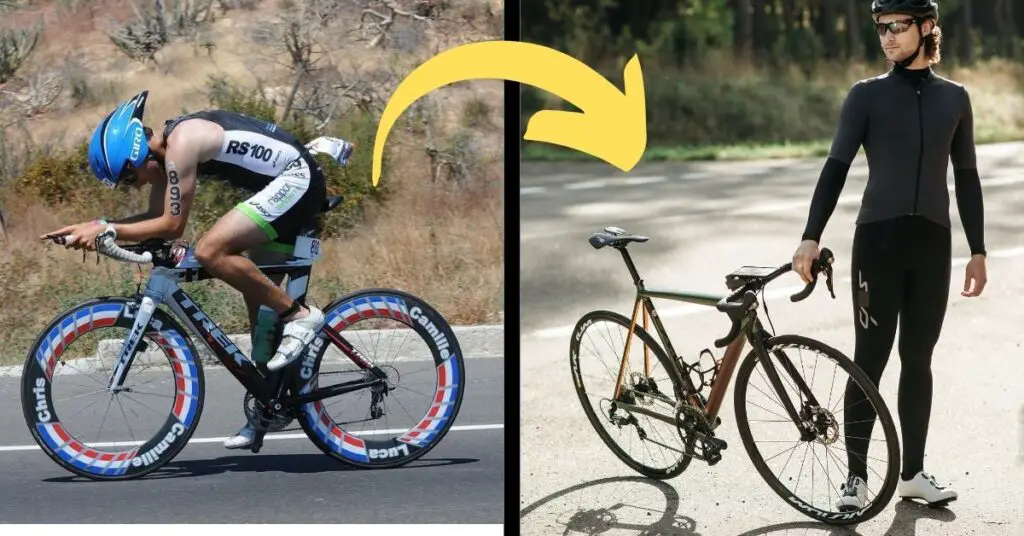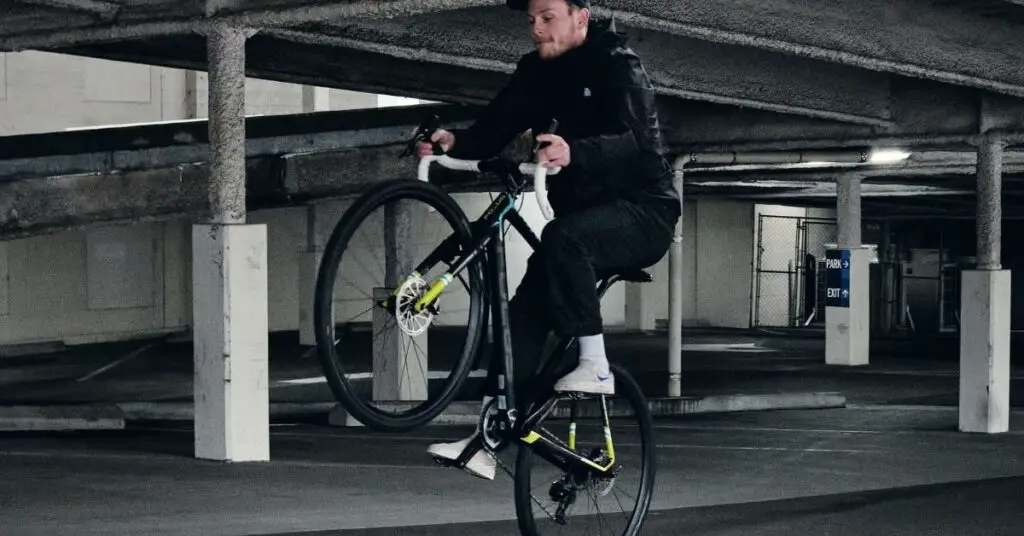Road bikes are built for speed and efficiency, specifically designed for fast travel on roads and pavements that are smooth and in good condition.
However, it is not uncommon to have rough spots, cracks, loose gravel, and potholes on roads.
Bad roads are a reality, but they don’t require a mountain bike to manage them. Read on to find out how experienced road bikers deal with roads that are in disrepair.
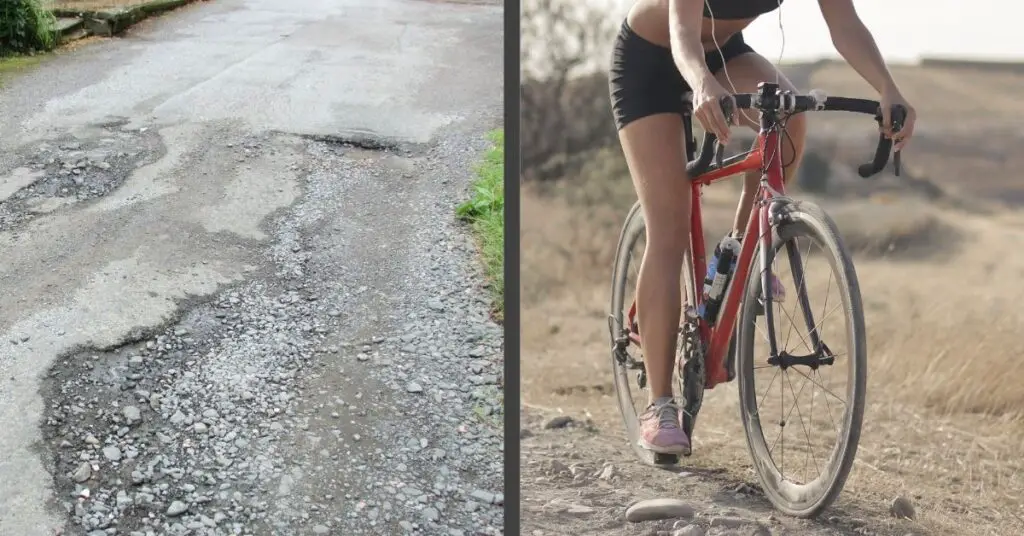
Can Road Bikes Handle Bumps, Potholes and, Rough Roads?
Road bikes can handle bumps, potholes and, rough roads but only with the right techniques and bike components. Changing your tire width and pressure, and adapting the way you ride results in smoother rides and decreases your chances of having mishaps and accidents that could damage both you and your bike.
Bumps
Bumps are small, raised, uneven surfaces on the road and are varied in nature.
Loose gravel, objects on the road, sidewalk joints, and curbs between the road and pavement are all examples of bumps.
Small bumps such as sidewalk joints can be transversed by slowing down and standing up on the pedals thus unweighting the bicycle. You should bend your knees and elbows to absorb some of the shock created by the bump.
For larger bumps, as your front wheel runs over the bump, swing your weight backward and pull up on your handlebars to decrease the impact on the front wheel. As your back wheel runs over the bump, shift your body over the handlebars, to allow the back tire to lift slightly.
To mount a low curb, the same technique can be used. You should never angle the wheels as you ride over a bump. You can bunny hop to clear higher bumps (more details on how to bunny hop below).
Potholes
Potholes are holes in the surface of the road and are particularly nasty for bike riders.
Riding through potholes may jolt, deflect or trap the wheels of your road bike which could send you flying off your bicycle into the road. If the pothole has sharp edges or is surrounded by debris, running through the pothole could puncture your tires.
The best way to handle potholes on a road bike is to spot them ahead of time and avoid them, by maneuvering around them.
Rough Roads
Rough roads are uneven with lots of cracks, small dips, rises, and loose gravel that will make your ride bumpy and uncomfortable.
Roads that are in bad condition often result in a decreased riding speed due to the increased effort required to ride over them. There are a few ways to increase your comfort on bad roads.
Dropping down to a lower gear decreases your cadence and increases the stability of the bike so that it doesn’t rattle and shake as much. You end up placing more weight on the pedals and less on the saddle which increases the stability of the bike.
Increasing your speed requires more effort but it does provide a smoother ride.
There are more tips for navigating bad roads with greater comfort below.
What About Other Hazards?
Oil Slicks
Both wet and dry oil slicks pose a hazard when riding a road bike, as they make the tires of the bike greasy, drastically increasing the chances of slips and falls.
Wet oil slicks can be identified by the iridescent rainbow patterns of oil in water, while dry oil slicks are harder to spot.
Puddles
Puddles of water can conceal the depth and existence of potholes, so it’s best to avoid them even if they seem shallow.
Can Rough Roads Damage Your Bike?
Bad roads can damage your bike. The wheels of your bike are the most susceptible to damage.
Pinch flats occur when the tire is squeezed as a result of a harsh impact from the edge of a pothole or sharp object. The tube of the tire presses hard against the rim, which causes a puncture in the inner tube.
You run the risk of getting pinch punctures if your tires are thin or underinflated.
Hard shocks can result in broken spokes, rim destruction, and cracked wheels and forks. The front-wheel can also veer out of position which can cause the rim to rub against the brake block. Over time this rubbing action wears the rim down, making it more susceptible to cracking and breaking.
If you ride on rough roads often, the constant vibrations cause the crank arms, fenders, and forks to loosen.
Can Rough Roads Cause Damage the Rider?
1- Rough roads are often unpleasant to ride on, as they cause you to bump around in your seat.
2- Hitting a pothole increases the risk of flying over your handlebars onto the hard pavement. The injuries which result may be superficial grazes or more serious in nature.
3- Research suggests that constant vibrations experienced on bad roads can lead to nerve and blood vessel damage in your hands and arms. The main symptom of Hand-arm Vibration Syndrome is numbness and blanching of your fingers, pain, and a loss of grip.
Tips to Handle Bumps, Potholes, & Rough Roads on Your Bike
Adapting Your Bike to Handle Bad Roads
1- Increase the Diameter of Your Tires
Road bikes have notably thin tires (around 23mm) designed to decrease friction and increase speed.
However, if you use wider tires with a diameter of 25mm and above, it will result in a smoother ride due to better shock absorption. If you regularly travel on bad roads, you should get the biggest tires that can fit your bike.
2- Decrease Your Tire Pressure
The higher the tire pressure, the more you (and your bike) will bounce over bumps. The use of wider tires allows you to decrease the tire pressure to make your ride less bumpy, without running the risk of pinch flat punctures.
Pinch flats will occur if the tire pressure is too low, even in wider tires.
3- Steel Frame Bikes Are Better Suited to Rough Roads Than Aluminum Frame Bikes
Aluminum metal is stiff and it doesn’t absorb the vibrations created from riding over rugged roads which means the impact of shocks is taken by the wheels and the rider.
Steel is much more flexible and it absorbs and isolates the vibrations and bumps, putting less strain on the wheels and the rider.
Adapting Your Bike Riding Technique to Handle Bad Roads
1- Watch the road ahead and look for obstacles and potholes that show up as dark patches from a distance.
2- Choose the best line with the least potholes and bumps. Avoidance of rough areas in the road is safer than compensation.
3- Keep your posture loose and bend in your knees and elbows to absorb impact. Grip the handlebars firmly but not too tight.
4- Ride a distance away from the curb so that you are able to move left and right when avoiding potholes and other obstacles.
Practicing and mastering the following techniques are useful when you can’t avoid bumps and potholes:
● Unweighting the bicycle reduces the impact of shocks. You should slow down and stand up out of the saddle and onto the pedals, with your knees slightly bent. This enables you to hit the rough bits as lightly as possible.
● Controlled swerving can save your front wheel from surprise potholes. To do this turn the handlebars sharply away from the obstacle, then turn them back to the original position.
● ‘Bunnyhop’ is a useful technique when mounting onto and off the pavement, and over obstacles, because it reduces the shock and impact on you and your bike, significantly.
Bunny hopping is jumping with your bicycle so that both wheels lift over the bump.
How to Bunny Hop
STEP 1– Stop pedaling with the crank arms horizontal to the road.
STEP 2– Crouch over your bike with your knees and elbows bent.
STEP 3– Push down hard on the handlebars and pedals, and then spring up evenly as a single motion so that your handlebars and pedals rise with your body.
Road Bike for Poor Roads
Road bikes in the endurance category are the best bikes for poor roads because they isolate vibrations and work on the premise that smoother rides are faster rides.
| Endurance category road bikes have the following features in common: ● They fit larger tire diameters (32- 38mm) ● Have disc brakes ● Incorporate a suspension system ● Have an overall relaxed geometry |
Here are a few recommended endurance bike models
1) The specialized Roubaix
2) The Trek Domane
3) Giant Defy
Final Thoughts!
You don’t have to be daunted or worried while cycling on rough roads. Good quality bikes often surprise riders with their ability to take harsh shocks without breaking.
Practicing techniques for avoiding obstacles in safer environments (e.g. on the lawn, or in empty car parks) will build your confidence and reduce your reaction time when you are faced with real-life challenges.
Being adaptable in how you ride and adapting your road bike using the guidelines laid out in this article will lead to a safer and more comfortable ride. Rest assured that you and your bike will be able to handle obstacles if you are prepared for them.
Cheers!

